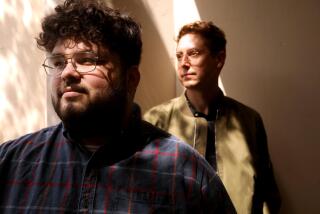Adoption’s poignant tales
- Share via
WHEN I was growing up, the fact that my older brother had joined our family through adoption was known by all concerned but seldom discussed. Although not quite banned, the subject was considered inappropriate for polite conversation.
We knew only that our parents had yearned for a child and been told they couldn’t conceive. (The doctors were later proved wrong, four times over.) This veil of secrecy was considered, at that time, the most helpful way for all concerned to move forward: the new family, the adopted child and the biological parents who had relinquished the child.
Times have changed.
Adoptive children in the United States now number more than ever before -- 1.6 million -- and the circumstances surrounding their adoptions are not just discussed openly but are often celebrated and honored.
In this new age of adoptive openness, parents and children can know and stay in touch with birth parents, races are often mixed in family composition, children are adopted in growing numbers from foreign countries, and single and same-sex adoptive parents abound.
In “A Love Like No Other,” an anthology of stories by 20 adoptive parents, readers encounter the joys and frustrations in this new age of adoption.
Some of the essays are similar to those that would have been told a generation ago: fears of lurking genetic problems, the tendency to blame adoption for behavioral issues that, in a biological child, might seem garden variety, and how the addition of a child to a previously childless living situation can confuse and depress even the most devoted parent without diminishing the thrill, love and delight the new child brings.
Others are unique to our times. Dan Savage’s “Living With a Very Open Adoption” tells of raising son DJ together with his male partner and trying to keep the lines of communication open with DJ’s biological mother, Melissa, who had given birth as a homeless 19-year-old.
“You know what a broken heart looks like?” Savage asks readers. “Like a sobbing teenager in a hospital bed giving a two-day-old infant she knows she can’t take care of to a couple she hopes can.”
After the birth, Melissa remains “homeless by choice” and hitchhikes or rides the rails to be in comfortable weather each season. Initially, she stays in contact with DJ, who looks forward to her calls. But when she goes missing, the parents are stuck not knowing what to do. Is she dead? Is she coming back? How can they answer DJ’s inquiries?
Bonnie Miller Rubin writes of the struggles she encountered when her second child, a “Gerber baby” adopted from Chile, turns out to be different from her son (who had been adopted domestically) and the other neighborhood children. The girl has severe emotional problems and eventually is placed in a residential facility.
“Was my daughter damaged by some toxic substance in utero?” Rubin agonizes. “Or because she spent the first five months of her life lying on her back staring up at the ceiling? Like biological mothers who beat themselves up over that glass of wine during the first trimester, I anguished over our choice of country and adoption agency.”
Co-editor Jill Smolowe writes of adopting her daughter Becky from China and her commitment to raising Becky with a love of Chinese culture. “By the time you’ve checked all the boxes and answered your social worker’s barrage of questions -- Will you raise your child to respect her heritage? Will you honor your child’s place of birth? Will you instill racial pride in your child? -- you feel that you’ve considered all the angles.
“But all these hypotheticals are a lot like the vows you take on your wedding day when you promise to love and honor your future mate: You really mean it -- you just don’t have a clue what it will look like or how it will play out.”
Although there’s much to be said for the diverse ways adoptions are now conducted and the openness that often goes with them, there’s no discounting the difficulties and pain that may accompany an adoption -- just as there are challenges and aches inherent in raising biological children.
Thanks to the bracing honesty of these tales, readers see in complex portraits the many faces of families created by adoption. But more than anything, what comes through is the ferocious love these parents harbor for their children, and the lengths to which they are willing to go to give them a wholesome, love-filled childhood.
A regular contributor to Book Review, Bernadette Murphy is the author (with Michelle Huneven) of “The Tao Gals’ Guide to Real Estate.”
More to Read
Sign up for our Book Club newsletter
Get the latest news, events and more from the Los Angeles Times Book Club, and help us get L.A. reading and talking.
You may occasionally receive promotional content from the Los Angeles Times.










